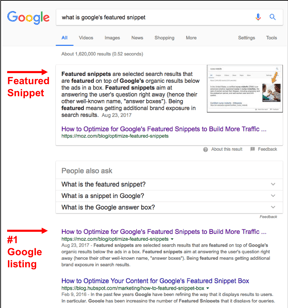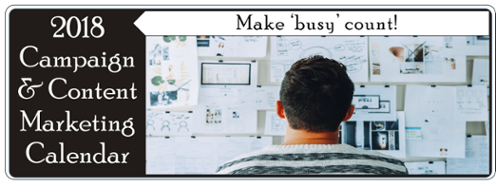
By now, we all know how important SEO is for our business, but with changes and updates constantly being made by search engines like Google, it can be hard to keep up. You'd be forgiven for thinking SEO must be some kind of fairy dust bestowed upon the elite websites of the world – or simply a mates-deal with Google.
It’s not.
So today we're demystifying SEO: what it is, why we need it, how it works, and how 'get it'.
What is SEO?
SEO stands for Search Engine Optimisation.
A search engine's goal is to return the very best search results possible for the person searching for information. SEO simply means improving your website and its content so that search engines (like Google) consider it to be a place people should go to get the answers they’re looking for.
Results are based on more than just hits on keywords and with multiple considerations in play that make up search algorithms, search engines are looking for web pages that not only contain the right content, but that it’s also valuable, reliable and gives a great user experience.
Keyword stuffing is out. Unhelpful content is out. User experience is in.
Why is SEO Important?
If you're creating a website you want prospects to find, optimising it for search will be a crucial step in your web design and development process so you don't end up spending your money on a beautiful website that no one will ever find.
 And you want the right people to find your website. Your goals (in order of progressive achievement) should be to rank for your target audience’s search terms:
And you want the right people to find your website. Your goals (in order of progressive achievement) should be to rank for your target audience’s search terms:
Goal 1: On the first page.
Goal 2: On the top half of the first page.
Goal 3: As the first search result (after ads).
Goal 4: As the featured snippet (Google).
Goal 5: As both the featured snippet and the first listing.
How Does SEO Work?
Search engines use algorithms to determine how it will rank your website and website pages when someone requests a search. Remember, the search engine's goal is to deliver the best, closest matching, best-experience search results.
When you optimise your website for search, you're making sure your website pages are meeting and scoring well on as many of the algorithm criteria as it can.
There are presently more than 200 factors that work into Google's algorithm when it ranks results. It's unrealistic to expect any one website to be (and stay) 100% optimised for all algorithms, all search engines, and at all times, especially with all the updates and changes.
Having said that, there are some core SEO principles that you have to get on top of, and that will take you far quickly.
Achieving SEO: How to Rank Better in Search Results
SEO is not like getting a degree where once it's done, it's done. It's more like a relationship: there's the first step, and then there's the ongoing maintenance and the keeping up with your partner! That means SEO needs to be an ongoing initiative in your online marketing strategy.
While there are some technical things that your web designer and developer should consider – design layout and usability, infrastructure and technology, mobile responsiveness, speed and performance, security, indexing and crawlability, etc – there are things you can do yourself for some quick wins:
1) Keywords & Keyword Phrases –
Know and use the right keywords and keyword phrases that your target customers are using. Keep in mind the purpose of your website - to attract customers - and that you’re building pages for them.
Consider what terms they might use at different stages of their purchase journey: someone who knows they have a problem but doesn’t know what they need (awareness stage) may use different terms to someone who has researched their problem.
Jargon you use in your industry may not be the same words being used by your prospects. Start with a thorough understanding of who your target customers are and what language they're using to describe the problem you solve.
2) Keyword Placement –
Use those keywords and keyword phrases in the right places:
- Page titles
- Page headers (H1 tags)
- URLs
- Alt tags
- Page content
- Meta description*
* While your meta description at this time does not directly contribute to search ranks, you can be sure the more relevant your meta description (the snippet of text that is shown underneath a search listing), the more likely you’re going to get click through and page views, and the higher your page views, the better you start to rank – oh the intricacies!)
3) No Keyword Stuffing –
Keyword stuffing is when a page is loaded with keywords in an attempt to manipulate search ranks. Your website and pages will be penalised for this practice and it will work against you. Where possible, keep your keywords to under six per page.
4) Unique Pages –
Google knows everything. So it's no surprise that it knows when you use duplicated or copied content, page titles, meta descriptions, etc... and you're likely to be punished for it. Keep your pages unique.
5) Internal Site Links –
Where possible, use a few relevant links to other pages on your website on each page. This helps people and search engines 'crawl' through your site and make sense of your content.
6) Backlinks –
Backlinks are other websites that link back to your website pages. The higher ranked the site that links back to yours, the more weight your backlink is given. The more trustworthy sites you have linking back to your website pages, the better your website will rank. As you might with business development or networking, go on a hunt for businesses with authority that would find value in linking back to some of your content.
Avoid backlinks from sites that are considered not reliable or trustworthy. These can work against you.
7) Keep Your Site Updated –
Search engines notice when there are updates made to your pages or pages added to your website. They will crawl your website to index them, and this will get you noticed.
Keep your content up to date and keep adding pages of value to your website. That doesn’t mean adding a tonne of pages to your navigation menu (which can make browsing your site a frustrating experience and lead to higher visitor bounce rates), and it doesn't mean adding pages that don't have any value. Here are some easy ways you can add valuable content to your website:
- Regularly publishing blogs with great content to your site.
- Regularly creating relevant offers on website landing pages.
- Creating pillar pages and associated articles or blogs for them.
- Updating your website's content: update anything old, add new testimonials, add new images to your library, etc.
8) Cross Promotion: Increase Traffic Through Online Channels
The number of website visitors you have is a big consideration on how you rank. Actively promote your website conent through your other online channels. Give your audience a reason and a place to ‘land’ like a relevant blog post or an exciting new offer.
9) Stay Relevant
Absolutely key to it all is staying relevant to your target audience. They need to have a reason to engage with your content, so give them the purpose of relevance.
Easier said than done, right? Actually, it’s not as difficult as you might think. And I want to give you a two-step process to staying relevant:
Step 1. Create Your Buyer Profile –
Buyer profiles (aka buyer personas or avatars) help you determine many things about your target market: who they are, their challenges, what problems you solve for them, their purchase journey, what language (keywords) they use to find someone like you, what content they want to see…
Start by downloading our Buyer Persona template (with instructions and examples) and filling it out for two of your target market personas (hint: start with your most obvious customer):
Step 2. Create Your Campaign & Content Calendar –
A content calendar will help you plan out your content: campaigns, offers, blogs, articles, social media posts... Using a calendar is an easy way to also make your content relevant to what’s going on at that time of year or on specific dates. Here's how:
1. Download your 2018 Campaign & Content Calendar template.
2. Fill out the periods and dates relevant to your business (your target audience) (we’ve already added some for you).
3. Map out campaign timeframes relevant to your audience, the time of the year, and the problem you solve for them at that time.
4. Map out other important content you want to publish.
5. Voila! A relevant content strategy with purpose! Your prospects will love you!
Need that calendar link again?
Happy content strategising!
Paula.




